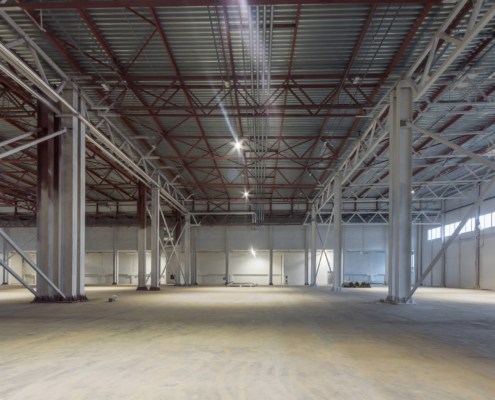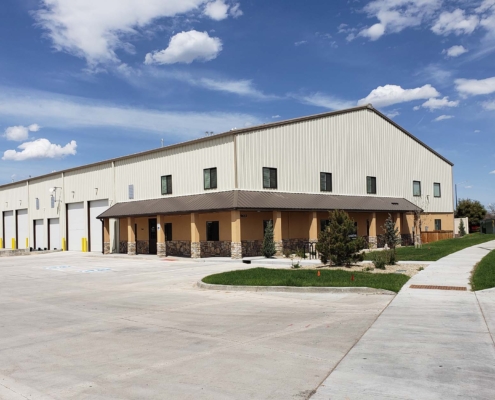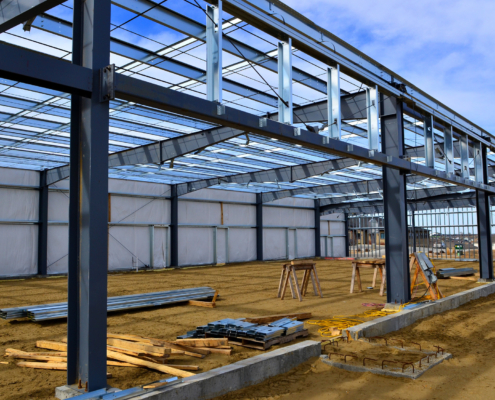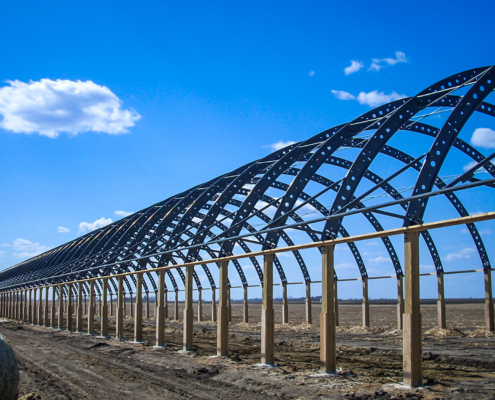 https://www.calahan.com/wp-content/uploads/2025/10/Metal-Building-Construction_-Cost-Savings-Without-Cutting-Corners.jpg
1250
2000
AbstraktMarketing
/wp-content/uploads/2021/02/ccs_logo_full.png
AbstraktMarketing2025-10-13 12:52:212025-11-18 14:23:52Achieving Metal Building Cost Savings Without Cutting Corners
https://www.calahan.com/wp-content/uploads/2025/10/Metal-Building-Construction_-Cost-Savings-Without-Cutting-Corners.jpg
1250
2000
AbstraktMarketing
/wp-content/uploads/2021/02/ccs_logo_full.png
AbstraktMarketing2025-10-13 12:52:212025-11-18 14:23:52Achieving Metal Building Cost Savings Without Cutting CornersThe Benefits of Pre-Engineered Sustainable Metal Buildings
As businesses strive to reduce their environmental impact, the materials and methods behind each project matter more than ever. And sustainable metal buildings have quickly become a go-to solution for organizations seeking both performance and purpose. From their energy-efficient design to recyclable materials and minimal construction waste, pre-engineered metal buildings (PEMBs) offer a smarter, greener way to build.
Why Sustainability Is Shaping Modern Construction
The demand for eco-friendly commercial buildings has grown rapidly in recent years. Building owners aren’t just thinking about short-term budgets, they’re planning for energy efficiency, lifecycle costs, and environmental impact.
In response, design teams are turning to green metal construction for its balance of performance, longevity, and environmental responsibility. Unlike traditional materials that degrade or produce heavy waste, steel offers a repeatable, sustainable framework for the next generation of buildings.
Pre-engineered metal systems, in particular, are engineered for precision and efficiency. Every beam, panel, and connection is designed in a controlled environment to reduce material use and improve thermal performance—key drivers of sustainability that go beyond aesthetics.
Energy Efficiency Built In
One of the strongest sustainability advantages of pre-engineered metal buildings is their ability to deliver consistent, measurable energy savings over time.
Because these buildings are designed as integrated systems, the walls, roof, and structure work together to create a highly efficient envelope. Insulated metal panels and reflective “cool roof” coatings can significantly reduce heat absorption, leading to lower energy consumption for heating and cooling throughout the year.
Optimized Thermal Performance
Modern insulation systems minimize thermal bridging and air leaks, ensuring steady indoor temperatures and less strain on HVAC systems. Over time, this efficiency translates to lower utility costs and a smaller carbon footprint.
LEED-Friendly Design Opportunities
Many LEED-friendly metal buildings earn credits under categories like Energy and Atmosphere or Materials and Resources. The ability to integrate renewable energy systems, such as rooftop solar arrays, further strengthens their sustainability profile, helping organizations pursue green certifications or meet local energy codes with ease.
Recyclability and Responsible Material Use
Sustainability isn’t just about how a building performs during its life, it’s also about what happens before and after construction. In this respect, steel outperforms nearly every other building material.
Most pre-engineered metal buildings contain a high percentage of recycled steel. Even better, steel is 100% recyclable at the end of its lifespan, meaning your building’s framework could one day become part of another project, bridge, or vehicle.
This closed-loop recycling process prevents millions of tons of waste from entering landfills each year and reduces the demand for new raw materials. When compared with concrete or wood, the embodied carbon savings can be substantial.
Key advantages include:
- Minimal material waste due to precise factory fabrication
- Reduced onsite cutting and disposal
- Steel components that can be reused, melted down, or repurposed indefinitely
Together, these factors make sustainable metal buildings an essential part of the circular economy.
Reduced Construction Waste and Onsite Impact
Pre-engineered metal buildings are manufactured with efficiency in mind, and every part is fabricated to exact specifications before arriving at the job site. This precision eliminates guesswork and dramatically reduces construction waste.
Traditional construction often results in leftover materials, broken components, and shipping waste. By contrast, metal building systems are designed to fit together like a kit of parts, with minimal on-site modification needed.
This streamlined process also means:
- Less noise and disruption: Shorter build times and fewer deliveries reduce emissions and environmental disturbance.
- Lower equipment usage: Cranes and heavy machinery spend less time on site, cutting fuel use.
- Cleaner job sites: With fewer materials to store or discard, waste management becomes far simpler and greener.
For clients with sustainability requirements or LEED goals, these efficiencies are not only environmentally friendly but also documentation-ready.
CTA Looking to incorporate sustainability into your next project? Learn more about pre-engineered metal buildings and how they combine efficiency, design flexibility, and long-term value.Button
Long-Term Sustainability and Value
Sustainability doesn’t end once the doors open. The long lifespan and low maintenance requirements of sustainable metal buildings make them a natural fit for public, educational, and commercial owners focused on total cost of ownership.
Steel structures resist rot, mold, and pest damage are issues that often shorten the life of conventional materials. Their durability translates directly into fewer repairs, lower replacement costs, and reduced material use over time.
Even small operational benefits add up:
- Energy savings through reflective roof coatings
- Reduced maintenance from high-performance finishes
- Easier retrofits for future solar or insulation upgrades
In other words, investing in sustainability pays off for decades—both environmentally and financially.
Supporting LEED and Green Building Goals
Many organizations today aim to meet specific sustainability frameworks, from LEED certification to state and municipal energy codes. Pre-engineered metal buildings can contribute in multiple categories:
LEED Material and Resource Credits
Steel’s high recycled content and end-of-life recyclability directly support LEED credit MRc4 and MRc5. Prefabrication also reduces on-site waste, improving documentation for Construction Waste Management credits.
Energy and Atmosphere Points
Insulated panel systems and energy-efficient envelopes contribute to energy optimization and reduced operational emissions, which is another major LEED focus area.
Innovation and Regional Priority
Metal buildings often incorporate design strategies like rainwater harvesting, solar integration, and passive ventilation, helping owners pursue additional innovation points.
By partnering with a contractor experienced in LEED-friendly metal buildings, you can ensure your project’s design, documentation, and execution align seamlessly with your green goals.
A Broader Perspective: Metal Buildings as Part of Green Communities
Beyond the technical details, sustainable construction plays a role in community development and long-term stewardship. For example, municipalities and school districts choosing sustainable metal buildings aren’t just building for today, they’re investing in facilities that conserve energy, reduce environmental impact, and remain adaptable for generations.
Because metal systems can be easily expanded or reconfigured, they support flexible community growth without the waste or cost of starting over. That adaptability further strengthens their case as a long-term, sustainable choice for public infrastructure.
Build Smarter, Build Greener With Calahan Construction
From energy savings to recyclability and reduced construction waste, pre-engineered metal buildings check every box for sustainability. They’re durable, adaptable, and designed for clients who want to do right by both their budget and the environment.
Whether you’re aiming for LEED certification or simply want a more efficient way to build, sustainable metal buildings deliver measurable benefits at every stage of the process.
Calahan Construction’s experience in green metal construction ensures that each project meets performance goals while supporting broader sustainability objectives.
Ready to build a greener future? Contact us today to discover how our design-build team helps clients achieve lasting, eco-friendly results.
Share This Post
More Like This
 https://www.calahan.com/wp-content/uploads/2025/10/Metal-Building-Construction_-Cost-Savings-Without-Cutting-Corners.jpg
1250
2000
AbstraktMarketing
/wp-content/uploads/2021/02/ccs_logo_full.png
AbstraktMarketing2025-10-13 12:52:212025-11-18 14:23:52Achieving Metal Building Cost Savings Without Cutting Corners
https://www.calahan.com/wp-content/uploads/2025/10/Metal-Building-Construction_-Cost-Savings-Without-Cutting-Corners.jpg
1250
2000
AbstraktMarketing
/wp-content/uploads/2021/02/ccs_logo_full.png
AbstraktMarketing2025-10-13 12:52:212025-11-18 14:23:52Achieving Metal Building Cost Savings Without Cutting Corners https://www.calahan.com/wp-content/uploads/2025/09/Roadrunner-HVAC-Metal-Building.jpg
1250
2000
AbstraktMarketing
/wp-content/uploads/2021/02/ccs_logo_full.png
AbstraktMarketing2025-09-24 12:17:422025-11-18 14:23:53Understanding Long-Term Metal Building Maintenance Costs
https://www.calahan.com/wp-content/uploads/2025/09/Roadrunner-HVAC-Metal-Building.jpg
1250
2000
AbstraktMarketing
/wp-content/uploads/2021/02/ccs_logo_full.png
AbstraktMarketing2025-09-24 12:17:422025-11-18 14:23:53Understanding Long-Term Metal Building Maintenance Costs https://www.calahan.com/wp-content/uploads/2025/09/Glove-Wagon-Metal-Building.jpg
1250
2000
AbstraktMarketing
/wp-content/uploads/2021/02/ccs_logo_full.png
AbstraktMarketing2025-09-24 12:17:412025-11-18 14:23:53A Practical Guide for Confident Metal Building Construction Cost Budgeting
https://www.calahan.com/wp-content/uploads/2025/09/Glove-Wagon-Metal-Building.jpg
1250
2000
AbstraktMarketing
/wp-content/uploads/2021/02/ccs_logo_full.png
AbstraktMarketing2025-09-24 12:17:412025-11-18 14:23:53A Practical Guide for Confident Metal Building Construction Cost Budgeting https://www.calahan.com/wp-content/uploads/2024/02/Green-Construction-Ensuring-Sustainability-in-Pre-Engineered-Metal.jpg
1250
2000
AbstraktMarketing
/wp-content/uploads/2021/02/ccs_logo_full.png
AbstraktMarketing2024-02-08 14:59:012025-11-18 14:24:13Green Construction: Ensuring Sustainability in Pre-Engineered Metal
https://www.calahan.com/wp-content/uploads/2024/02/Green-Construction-Ensuring-Sustainability-in-Pre-Engineered-Metal.jpg
1250
2000
AbstraktMarketing
/wp-content/uploads/2021/02/ccs_logo_full.png
AbstraktMarketing2024-02-08 14:59:012025-11-18 14:24:13Green Construction: Ensuring Sustainability in Pre-Engineered Metal https://www.calahan.com/wp-content/uploads/2024/02/How-Long-Do-Metal-Buildings-Last-Helpful-Maintenance-Tips-for-Longevity.jpg
1250
2000
AbstraktMarketing
/wp-content/uploads/2021/02/ccs_logo_full.png
AbstraktMarketing2024-02-08 14:46:012025-11-18 14:24:13How Long Do Metal Buildings Last? Helpful Maintenance Tips for Longevity
https://www.calahan.com/wp-content/uploads/2024/02/How-Long-Do-Metal-Buildings-Last-Helpful-Maintenance-Tips-for-Longevity.jpg
1250
2000
AbstraktMarketing
/wp-content/uploads/2021/02/ccs_logo_full.png
AbstraktMarketing2024-02-08 14:46:012025-11-18 14:24:13How Long Do Metal Buildings Last? Helpful Maintenance Tips for Longevity https://www.calahan.com/wp-content/uploads/2024/01/A-Guide-to-Metal-Building_-Quality-Control-in-Construction.jpg
1250
2000
AbstraktMarketing
/wp-content/uploads/2021/02/ccs_logo_full.png
AbstraktMarketing2024-01-22 08:59:532025-11-18 14:24:15A Guide to Metal Building: Quality Control in Construction
https://www.calahan.com/wp-content/uploads/2024/01/A-Guide-to-Metal-Building_-Quality-Control-in-Construction.jpg
1250
2000
AbstraktMarketing
/wp-content/uploads/2021/02/ccs_logo_full.png
AbstraktMarketing2024-01-22 08:59:532025-11-18 14:24:15A Guide to Metal Building: Quality Control in Construction 


